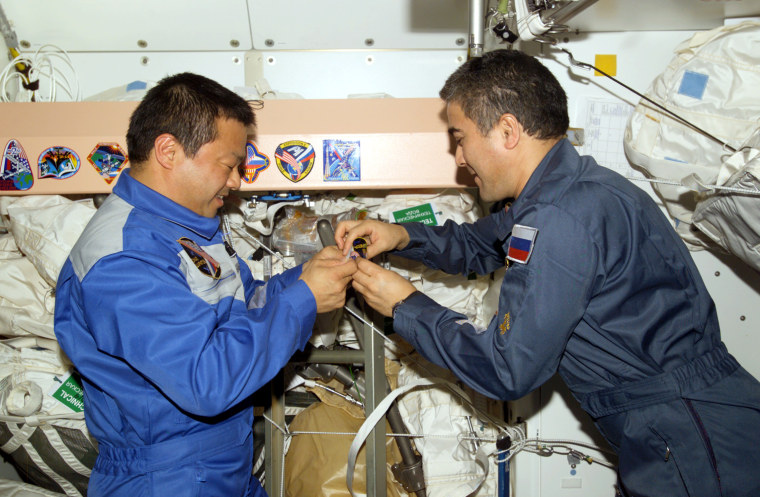As the 10th crew of the international space station tends to its orbital home this month, the station itself marks its fourth year with humans continuously living onboard.
For NASA officials, the anniversary marks the end of a year of firsts for the station that included unprecedented repairs and spacewalks for two space station crews.
In February, Expedition 8 commander Michael Foale and flight engineer Alexander Kaleri stepped outside the station for the first spacewalk without a crew member inside.
A few months later a new station crew, Expedition 9’s Gennady Padalka and Michael Fincke, flawlessly performed a spacewalk to repair a U.S. ISS component while wearing Russian Orlan spacesuits and starting from the Russian segment.
“It is a testament that we’ve learned a lot about adapting to conditions in space,” Mark Geyer, NASA’s space station manager for integration and operations, said in a telephone interview.
Four years of expeditions
Humans have lived onboard the station since Nov. 2, 2000, when the three-man crew of Expedition 1 set foot inside the orbiting station.
“It was a foggy day,” Geyer said of Expedition 1’s Oct. 31 launch from Baikonur Cosmodrome in Kazakhstan. “It was a long trip to see a three-second launch.”
Geyer stressed that while humans have lived continuously aboard the space station since 2000, they have lived in space much longer. The Russians had a near-continuous presence aboard Mir since 1996.
“So humans have been in space now for quite a long time, which forces engineers and operators to continue to be creative,” Geyer said, “especially for the 24/7 operations that will be required for future space exploration missions.”
Post-Columbia challenges
In the last year, two-person crews have replaced the standard three-person space station expeditions since the loss of Columbia in February 2003 and the grounding of NASA’s space shuttle fleet. Without the shuttle’s downmass capabilities, cargo has cluttered the station, and crews have had to find ways of repairing equipment that would normally be sent back to Earth.
“What you have to trade it against is the crew time required to repair something than to send it back on a shuttle,” Geyer said.
The Expedition 8 crew performed a meticulous gyroscope repair on the station’s exercise treadmill during their stay at the station. Meanwhile, Expedition 9’s Fincke performed a feat some engineers thought impossible, the disassembly and repair of a faulty U.S. spacesuit and replacement of a small rotor pump deep inside the suit’s cooling system.
NASA astronaut Leroy Chiao, the station’s current commander for Expedition 10, has continued those spacesuit repairs on a second U.S. suit. Chiao also became the first astronaut to vote in a presidential election from space.
Looking ahead
More firsts are planned for the ISS in the year ahead. Among them is the arrival of the European Space Agency’s unmanned automated transfer vehicle, Jules Verne, a supply ship expected to dock at the station in fall 2005. The Japanese Aerospace Exploration Agency is also developing an unmanned supply ship designed to be captured by the station’s robotic arm and connected to Node 2.
“These are different launch vehicles and systems based at different launch sites, which adds a lot of flexibility to servicing the station,” Geyer said. “That international [participation] is key.”
